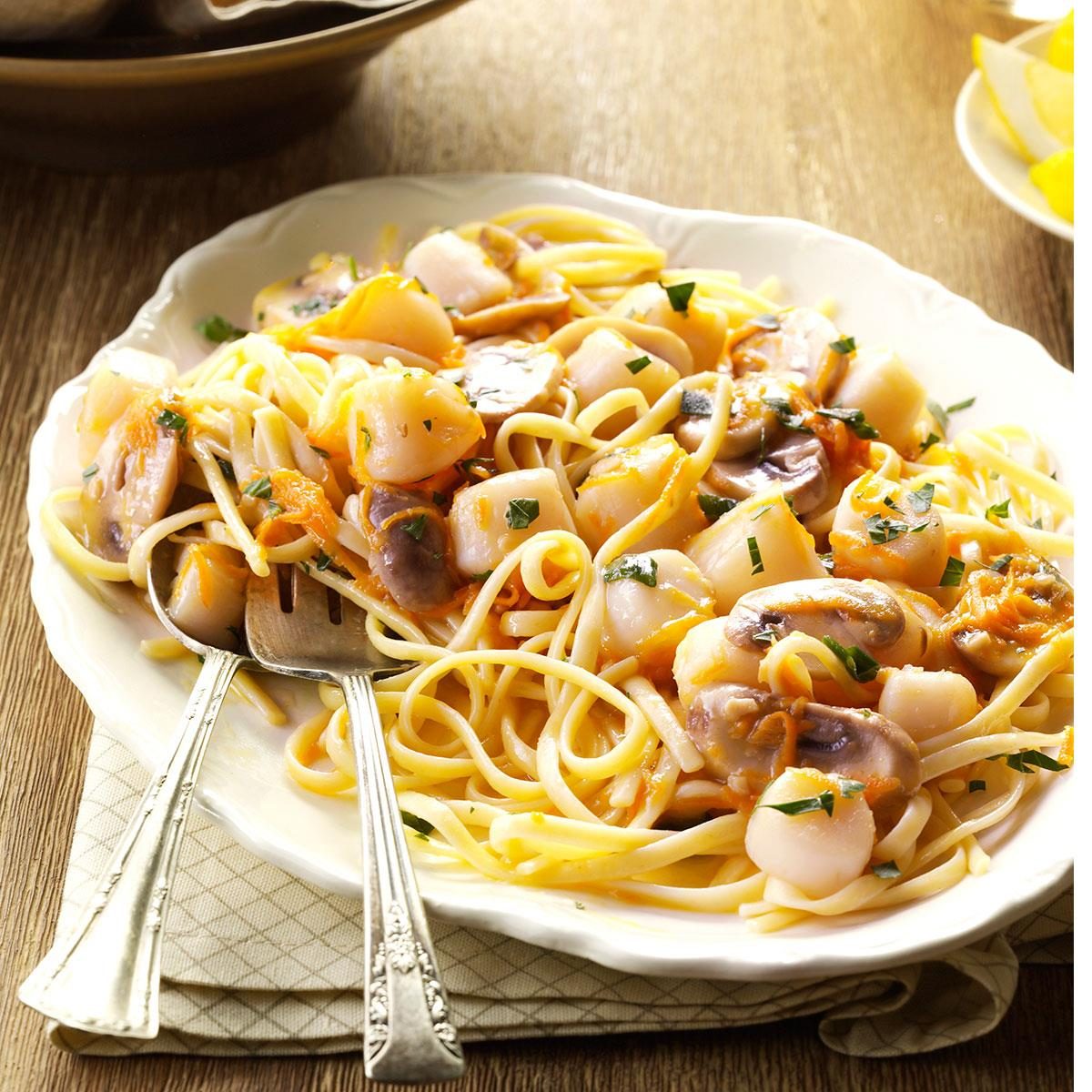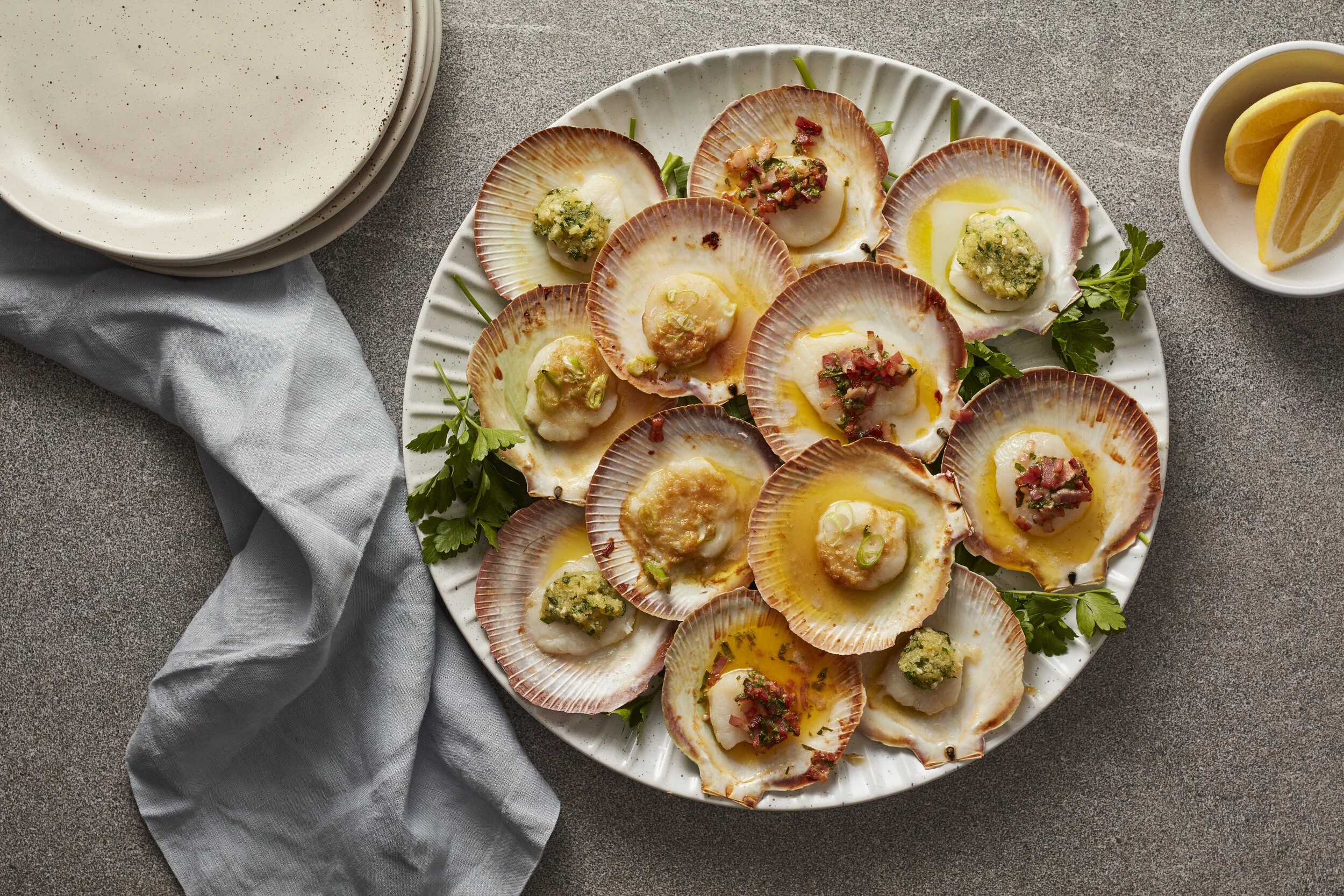Indulge in the exquisite flavors of the sea with our comprehensive guide to preparing half shell scallops. Whether you’re a seasoned chef or a home cook looking to impress, this recipe will elevate your culinary skills and tantalize your taste buds.
From selecting the freshest scallops to mastering various cooking techniques, we’ll guide you through every step of the process. Prepare to embark on a culinary adventure that will leave you craving for more.
Ingredients
Scallops, a delectable seafood delicacy, are bivalve mollusks prized for their sweet, briny flavor and tender texture. They come in various species, each with its unique characteristics and availability:
- Bay Scallops: Smaller in size with a mild, delicate flavor, bay scallops are commonly found in the Atlantic Ocean.
- Sea Scallops: Larger than bay scallops, sea scallops boast a firm texture and a slightly sweeter taste. They are abundant in both the Atlantic and Pacific Oceans.
- Diver Scallops: Harvested by divers, diver scallops are known for their exceptional quality and are considered a premium delicacy.
To prepare a tantalizing half-shell scallop dish, you will need the following ingredients:
- Scallops: 1 pound of fresh, large sea scallops, shucked and cleaned
- Butter: 1/2 cup of unsalted butter, melted
- Garlic: 2 cloves, minced
- Shallot: 1 small shallot, finely chopped
- White Wine: 1/4 cup of dry white wine
- Lemon Juice: 2 tablespoons of freshly squeezed lemon juice
- Fresh Parsley: 2 tablespoons of chopped fresh parsley
- Salt and Black Pepper: To taste
Each ingredient plays a vital role in enhancing the flavor and texture of the dish:
- Butter: Provides a rich, buttery base that coats the scallops and enhances their tenderness.
- Garlic and Shallot: Add aromatic depth and savory notes to the dish.
- White Wine: Deglazes the pan, creating a flavorful sauce that complements the scallops.
- Lemon Juice: Brightens the dish with its acidity and balances the richness of the butter.
- Fresh Parsley: Adds a vibrant freshness and herbaceous aroma.
- Salt and Black Pepper: Season the scallops and enhance their natural flavors.
Preparation
Preparing half shell scallops involves cleaning and shucking the scallops to remove the shells and preserve the tender meat.
Equipment and Tools
- Sharp knife
- Scallop shucking knife or spoon
- Bowl of cold water
Cleaning and Preparing the Scallops
- Rinse the scallops under cold running water to remove any sand or debris.
- Pat the scallops dry with a paper towel.
- Using a sharp knife, carefully cut around the edge of the scallop to separate the meat from the shell.
- Gently lift the meat out of the shell and place it in a bowl of cold water.
- Repeat the process with the remaining scallops.
Shucking Techniques
- Scallop shucking knife: Insert the knife between the scallop and the shell, then twist and pry the shell open.
- Spoon: Use a spoon to gently pry the shell open, taking care not to damage the meat.
Cooking Methods
Half shell scallops offer a versatile canvas for culinary creativity, with various cooking methods available to enhance their delicate flavor and tender texture. Each technique imparts its unique characteristics, allowing you to customize your dish to suit your preferences.
Grilling
Grilling imparts a smoky, charred flavor to the scallops, creating an enticing aroma and texture. Preheat your grill to medium-high heat and brush the scallops with melted butter or olive oil. Grill for 2-3 minutes per side, or until the edges are golden brown and the centers are opaque.
Baking
Baking offers a gentle cooking method that preserves the scallops’ delicate texture. Preheat your oven to 400°F (200°C). Place the scallops in a baking dish, drizzle with lemon juice or white wine, and season with salt and pepper. Bake for 10-12 minutes, or until the scallops are cooked through.
Pan-searing
Pan-searing creates a golden-brown crust on the scallops while keeping the interiors tender and juicy. Heat a skillet over medium-high heat and add a drizzle of olive oil. Season the scallops with salt and pepper and sear for 2-3 minutes per side, or until cooked through.
Sauces and Toppings
Half shell scallops offer a versatile canvas for a variety of sauces and toppings. These additions enhance the natural sweetness and delicate texture of the scallops, creating a symphony of flavors.
One classic sauce for half shell scallops is beurre blanc, a rich and creamy emulsion of butter, white wine, and shallots. Hollandaise, another delectable choice, is made with egg yolks, butter, and lemon juice, resulting in a silky and flavorful topping.
Garnishes and Toppings
In addition to sauces, a range of garnishes and toppings can elevate the presentation and taste of half shell scallops. Fresh herbs, such as chives, parsley, or dill, add a vibrant touch of color and herbaceous notes. Citrus zest, particularly from lemons or limes, provides a bright and tangy accent.
For a luxurious touch, consider topping your scallops with caviar. The salty and briny flavor of caviar complements the delicate sweetness of the scallops, creating an unforgettable culinary experience.
Presentation and Serving

intro
Presentation
- Present half shell scallops in a visually appealing manner by arranging them on a bed of crushed ice or a chilled platter.
- Garnish with fresh herbs such as parsley, thyme, or rosemary to enhance their appearance and aroma.
- Add a squeeze of lemon or lime to brighten the dish and balance the flavors.
Serving
- Serve half shell scallops as an appetizer with crackers or bread to soak up the juices.
- As a main course, pair them with a side of roasted vegetables or a simple salad.
- Drizzle with a flavorful sauce or topping to enhance their taste and texture.
Variations and Substitutions
The classic half shell scallop recipe offers a versatile base for culinary exploration. Here are some variations and substitutions to inspire your creativity:
Variations:
- Seafood Variations: Swap out scallops for other shellfish, such as shrimp, lobster, or crab, to create unique flavor profiles.
- Vegetable Additions: Enhance the dish by adding sautéed vegetables like spinach, mushrooms, or bell peppers to the filling for added texture and nutrition.
Substitutions:
- Cheese Substitutions: Instead of Parmesan, try using Gruyere, cheddar, or mozzarella for a different cheese experience.
- Herb Substitutions: Experiment with different herbs, such as basil, thyme, or oregano, to customize the flavor profile of the filling.
- Dietary Adaptations: Make the recipe gluten-free by using gluten-free bread crumbs, and adjust the dairy content to accommodate lactose intolerance or vegan preferences.
Troubleshooting
Preparing and cooking half shell scallops can be a rewarding experience, but it is essential to be aware of potential problems that may arise. This section identifies common issues and provides solutions to ensure successful results.
One of the most critical aspects of working with scallops is proper shucking. Improper shucking can damage the delicate meat, affecting its texture and flavor. To avoid this, use a sharp knife and carefully insert it between the shell and the muscle, gently cutting the muscle to release the scallop.
Overcooking is another common problem that can result in tough and chewy scallops. To prevent overcooking, cook the scallops for a short period, just until they turn opaque and slightly firm to the touch. Use a meat thermometer to ensure the internal temperature reaches 145°F (63°C).
Undercooking scallops is equally problematic, as it can leave them raw and potentially unsafe to consume. To avoid undercooking, cook the scallops until they are opaque throughout and reach an internal temperature of 145°F (63°C). Additionally, avoid overcrowding the pan, as this can prevent even cooking.
Conclusion
With this detailed guide, you’ll have the confidence to create mouthwatering half shell scallops that will steal the show at any gathering. Impress your guests with your culinary prowess and savor the delectable flavors of the ocean.
Q&A
What are the best types of scallops for half shell recipes?
Sea scallops and bay scallops are the most commonly used varieties for half shell preparations due to their size and meaty texture.
How do I clean and prepare scallops for half shell cooking?
Remove the side muscle from the scallop using a sharp knife. Rinse the scallops thoroughly and pat them dry with paper towels.
What are some classic sauces to pair with half shell scallops?
Beurre blanc, hollandaise, and mignonette are popular choices that complement the delicate flavor of scallops.
Can I substitute other seafood in this recipe?
Yes, you can use shrimp, clams, or mussels as alternatives to scallops in this recipe.
How do I prevent overcooking scallops?
Cook scallops for a short time over high heat to maintain their tender texture. Overcooking can make them rubbery.
